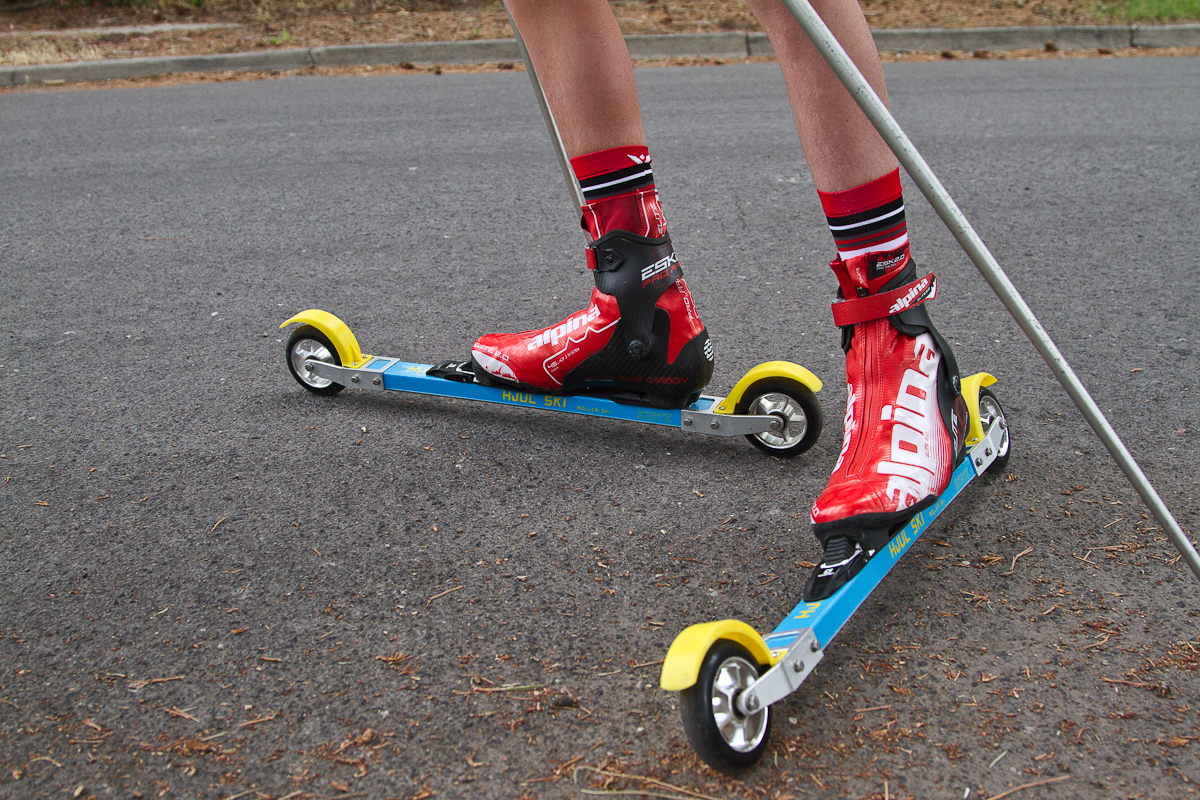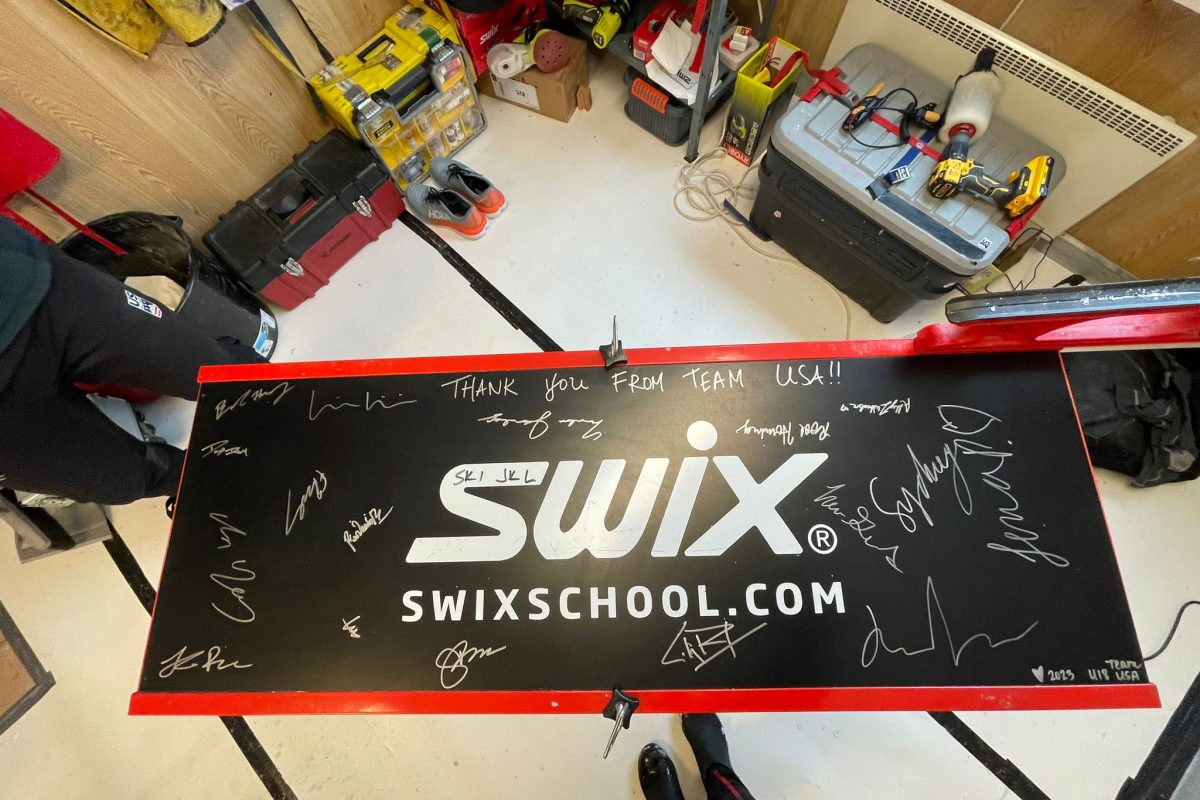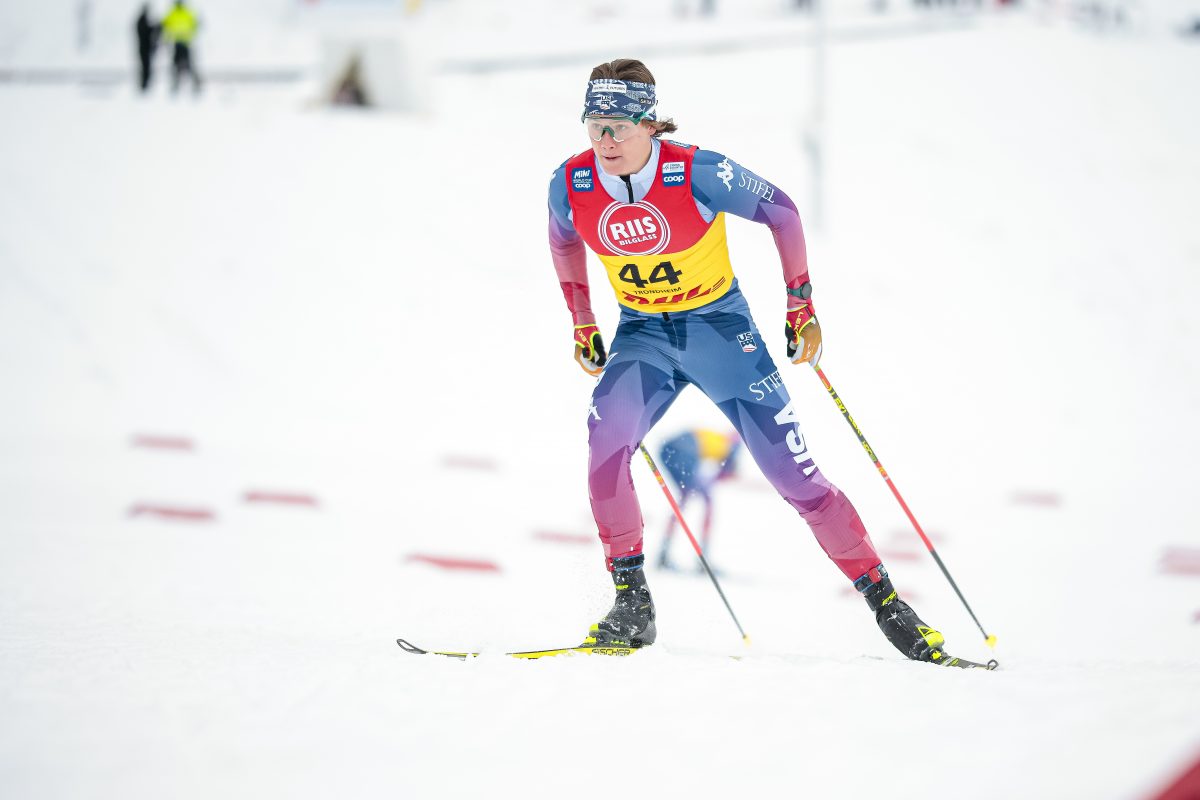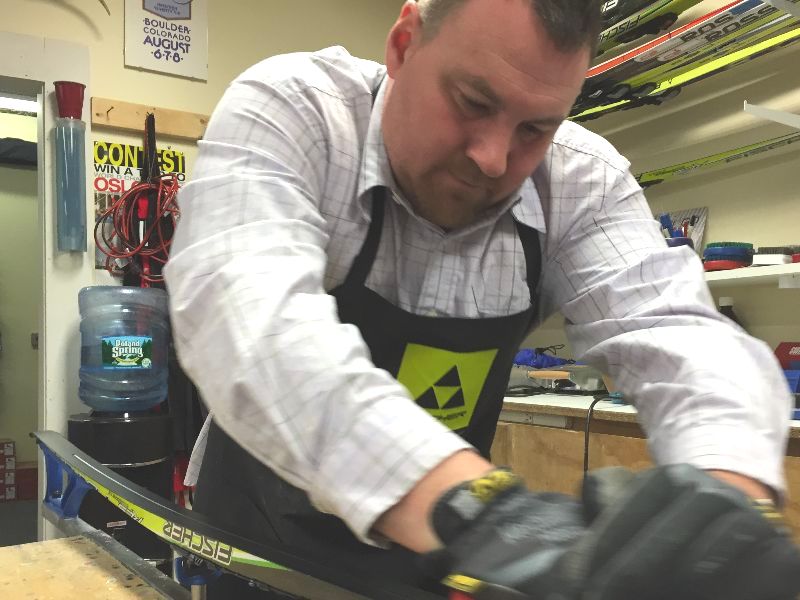
(Correction: This review has been updated to reflect that Hjul rollerskis are sourced and manufactured in China, as explained to FasterSkier by importer Pioneer Midwest.)
This rollerski review has as much to do about perception as it does about the more-than-solid value discovered in the Hjul skate rollerski. Pioneer Midwest, an advertiser on FasterSkier, imports Hjul from China, with ski-fit expert Matt Liebsch working to ensure proper specs, and sells the product here in the U.S. Pioneer Midwest sent along this rollerski for review.
Let’s get back to perception. My only experience with Hjul was the advertising clickbait when Googling “rollerskis”. Like chum for any info-hungry skier, Hjul is an attractant for two reasons. First, the colors are snazzy: a cotton-candy blue shaft with saffron yellow highlights and fenders. (No they’re not from Sweden.) Second: the price point. Both the skate and classic Hjul rollerskis retail for $200 dollars with either a SNS or NNN binding included.
Hjul Skate Rollerski – Cost: $200
– Weight/pair (without binding): 1984 g/pair
– Wheel size (width / diameter): 24 mm / 100 mm
– Wheel speed: Medium/slow
– Effective length (center wheel to center wheel): 625 mm
– Height (bottom edge of shaft to ground): 31.75 mm
That price point is a relatively small hurdle when considering the more costly and higher barriers to entry modern cross-country ski gear poses.
But we humans come with baggage. In the dog-eat-dog world of buying and selling, it seems humans are hardwired to assume the value and quality of a good is proportional to its price. Unsure of a particular good’s value, we often assume price correlates to quality.
Here’s a simple example. In blind studies, wine tasters sampling Wine A and Wine B often perceive the wine with the greater price to be more satisfying. If Wine A and B are the same wine, studies show samplers will perceive Wine A as more satisfactory if told it costs more than Wine B. Higher price. Higher quality. Wine is subjective. But then again, so are people and their perception of rollerskis.
Stay with us here. $200 with bindings for the Hjul skate rollerski? This reviewer assumed, everything being equal in terms of craftsmanship, the lower price means a lower-quality good.
(If you want further reading on human behavior and pricing, check out the following book: Predictably Irrational: The Hidden Forces That Shape Our Decisions by Dr. Dan Ariely. It comes on the recommendation of an economist/nordic skier whom I asked about the effect of pricing on human behavior.)
Anyhow … the Hjul’s have been used for two weeks. So far, we’d say the price-quality axiom is wrong when it comes to Hjul.
The Hjul skate ski is a composite shaft ski with medium/slow wheels — equivalent to a #2 wheel in terms of speed. Wheel size is standard; width is 24 millimeters, the diameter 100 mm. The forks are aluminum. Again, the fenders, which are removable, are yellow. These rollerskis do not come with a brake.
The Hjul’s weigh 1984 grams/pair with a swing weight compared to other name brands like Marwe’s 620xc model or Swenor’s elite skate rollerski. So in terms of weight, there’s no deal breaker.
From center wheel to center wheel, the Hjul ski measures 625 mm long while the Marwe and Swenor models mentioned come in at 620 mm and 615 mm respectively.
As far as stability, no problem there. The shaft rides 31.75 mm off the pavement — ample room to clear the random pebble. Most importantly, the ski rides close enough to the road to mitigate instability. The forks allow for a slight drop to decrease the riding/skiing height of the shaft. Learning to glide longer on a single ski while V2ing would be a non-issue on the Hjuls. And as far as flex, the shaft flexes subtly underfoot when loaded. Hjul offers the skate rollerski in one flex whereas Marwe, for example, offers a medium and stiff shaft on their “professional” skate roller ski models.

On all sorts of pavement from weathered chip and seal to pristine blacktop here in an undisclosed new development, vibrations were dampened. There’s simply none of that harsh transfer of chattery energy into the footbed. Something we all know as a hallmark characteristic of most aluminum shaft rollerskis.
These rollerskis are not the über-lightweight, short-shaft, agility course cheetahs the local U12 ripper smokes agility courses with. Read this as the Hjul is less rollerblade and more cross-country ski training tool. There’s a more mature vibe about the rollerskis with its smooth feel that also allows for speedwork and sprint-corner simulations when the workout calls for it.
The Hjul is less rollerblade and more cross-country ski training tool. There’s a more mature vibe about the rollerkis with its smooth feel that also allows for speedwork and sprint-corner simulations when the workout calls for it.
The pricing of this rollerski certainly won’t give you sticker shock. But getting back to our wine analogy, the price might make you think it’s the rough equivalent of a boxed Franzia Sunset Blush. You know, semi-palatable. That’s simply not the case. They are perhaps the best value on the market, as it skis like models coming in at over $350, not including bindings.
If you currently ski aluminum-shaft rollerskis or are just getting into the dryland game, or need to outfit local club skiers, the Hjul skate rollerskis are a worthy option.
Hjul means “wheel” in Norwegian. It might as well mean money in the bank.
***
Note: FasterSkier is open to gear-review suggestions from advertisers as well as non-advertisers. To inquire, email info@fasterskier.com with the subject line “Gear Review Inquiry”.
Jason Albert
Jason lives in Bend, Ore., and can often be seen chasing his two boys around town. He’s a self-proclaimed audio geek. That all started back in the early 1990s when he convinced a naive public radio editor he should report a story from Alaska’s, Ruth Gorge. Now, Jason’s common companion is his field-recording gear.



